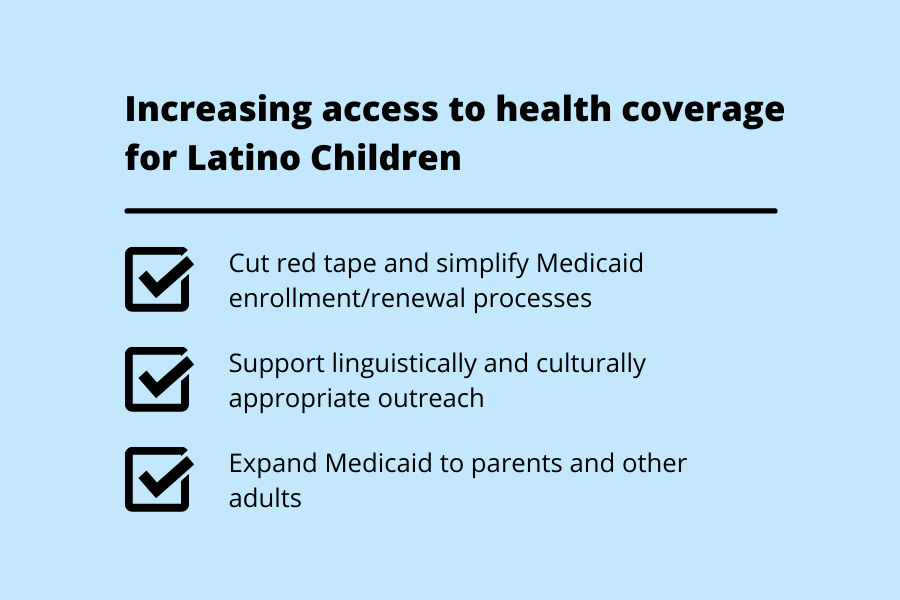As the overall child uninsured rate started going in the wrong direction between 2016 and 2019, Latino children were disproportionately affected, widening the long-standing coverage disparity after years of progress. As of 2019, there is an almost 5 percentage point gap between the uninsured rate for non-Latino and Latino children nationwide (4.4 percent versus 9.3 percent, respectively). (Friendly reminder: 95 percent of Latino children in the U.S. are citizens.)
In order to get back on track, policymakers must pinpoint the barriers to health coverage that Latino children face and identify strategies to address them. In a new report, we use data from the Census Bureau’s American Community Survey to identify four factors associated with a higher likelihood of being uninsured: state policy decisions limiting access to coverage for low-income families, failure to adhere to language access rules, limitations to affordable coverage for non-citizen children, and confusion and fear about health coverage options for citizen children living in mixed-status families.
State policy decisions appear to play an especially important role in either hindering or enhancing access to coverage. For example, looking at uninsured rates by detailed ethnicity reveals that children who identify as Dominican are less likely to be uninsured (4.8 percent) compared to most other Latino subgroups.
National Child Uninsured Rate by Detailed Ethnicity, 2019
Children who identify as Dominican are also most likely to live in New York (37.5 percent), a state with policies promoting comprehensive coverage and an overall Latino child uninsured rate of just 2.6 percent.
Top States of Residence for Latino Children from Different Backgrounds
Similarly, children who identify as Salvadoran are most likely to live in California (25.7 percent) or Texas (16.0 percent), but those who live in Texas are more than six times more likely to be uninsured compared to those who live in California.
Based on the trends identified in the data, we provide a series of recommendations including expanding Medicaid to cover more parents and other adults (this is associated with improvements in child uninsured rates); simplifying and tailoring Medicaid enrollment and renewal processes; and working in partnership with trusted, community-based organizations to conduct linguistically and culturally appropriate outreach.
To learn more, read the full report here.
Getting Back on Track: A Detailed Look at Health Coverage Trends for Latino Children


